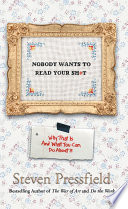

One of the core tenets of the book is that successful communication hinges on understanding the audience. The author emphasizes that before you write anything, you must identify who your readers are, what they care about, and what problems they are trying to solve. This involves putting yourself in the shoes of your audience and considering their perspectives, preferences, and pain points. By doing so, you can tailor your message to resonate with them, making it more engaging and relevant. The book provides practical strategies for researching your audience, including using analytics, surveys, and social media insights to gather data. It also discusses the importance of empathy in writing, urging writers to connect emotionally with their readers. When you write with your audience in mind, you increase the likelihood that they will not only read your content but also find value in it.
Continue readingThe author argues that clarity is paramount in writing. Many writers fall into the trap of using complex language, jargon, or convoluted sentences in an attempt to sound intelligent or authoritative. However, this often alienates readers who may struggle to understand the content. The book advocates for simplicity and directness in writing. It encourages writers to strip away unnecessary words, focus on concise language, and present ideas clearly. This not only makes the content more accessible but also enhances its impact. The author provides examples of how straightforward writing can effectively convey complex ideas without overwhelming the reader. By prioritizing clarity, writers can ensure that their messages are understood and appreciated, leading to better engagement and retention of information.
Continue readingA strong hook is essential to capture the reader's attention. The book highlights that the first few sentences of any piece of writing are critical; they determine whether a reader will continue or abandon the content. The author discusses various techniques for creating compelling openings, such as using provocative questions, surprising facts, or relatable anecdotes. By starting with an engaging hook, writers can pique curiosity and draw readers into the narrative. The book also emphasizes the need to maintain that interest throughout the piece by delivering on the promise made in the opening. This means that a well-crafted hook should be followed by valuable content that fulfills the reader's expectations, keeping them invested in the writing.
Continue readingEditing is portrayed as an essential step in the writing process. The author stresses that no piece of writing is perfect in its first draft. Effective editing involves revisiting the content with a critical eye, removing redundancies, clarifying ideas, and enhancing the overall flow. The book outlines practical editing techniques, such as reading the content aloud, seeking feedback from others, and taking breaks before revising to gain perspective. Additionally, it encourages writers to be ruthless in their editing, cutting out anything that does not serve the main message or add value. The author argues that editing not only improves the quality of writing but also reflects a writer's professionalism and respect for their audience.
Continue readingStorytelling is highlighted as a powerful tool in writing. The book explains that stories can captivate readers, making complex ideas more relatable and memorable. The author outlines the elements of effective storytelling, such as character development, conflict, and resolution, and encourages writers to incorporate these elements into their work. By weaving narratives into their writing, authors can create emotional connections with readers, enhancing engagement and retention. The book also provides examples of successful storytelling in various contexts, illustrating how narratives can be used to convey information, persuade audiences, or inspire action. Ultimately, the author argues that storytelling can transform mundane content into compelling narratives that resonate with readers on a deeper level.
Continue readingThe book emphasizes the importance of consistency in writing style, tone, and messaging. Consistency helps establish a writer's voice and brand, making it easier for readers to recognize and connect with their work. The author advises writers to develop a clear style guide that outlines their preferred language, tone, and formatting. This guide serves as a reference to ensure that all written content adheres to the same standards. Furthermore, the book discusses the role of consistency in building trust with readers. When writers maintain a consistent approach, it fosters credibility and reliability, encouraging readers to return for future content. The author argues that inconsistency can confuse readers and dilute the impact of the writing, making it essential to prioritize a cohesive approach.
Continue readingA clear call to action (CTA) is crucial in guiding readers on what to do next after engaging with the content. The book underscores that every piece of writing should have a purpose, whether it's to inform, persuade, or inspire. The author encourages writers to include specific CTAs that align with the content's goals, such as asking readers to share their thoughts, sign up for a newsletter, or take a particular action. By clearly outlining the desired response, writers can enhance reader engagement and drive meaningful interactions. The book provides examples of effective CTAs and discusses the psychology behind them, explaining how well-crafted CTAs can motivate readers to take action and deepen their connection with the content.
Continue reading